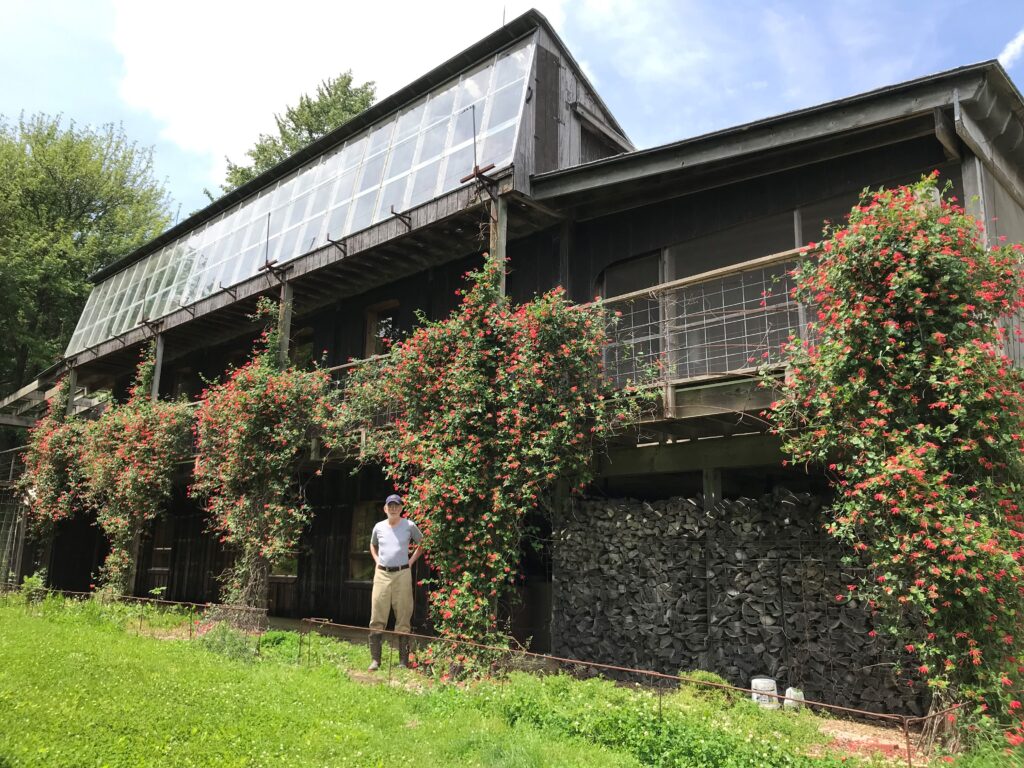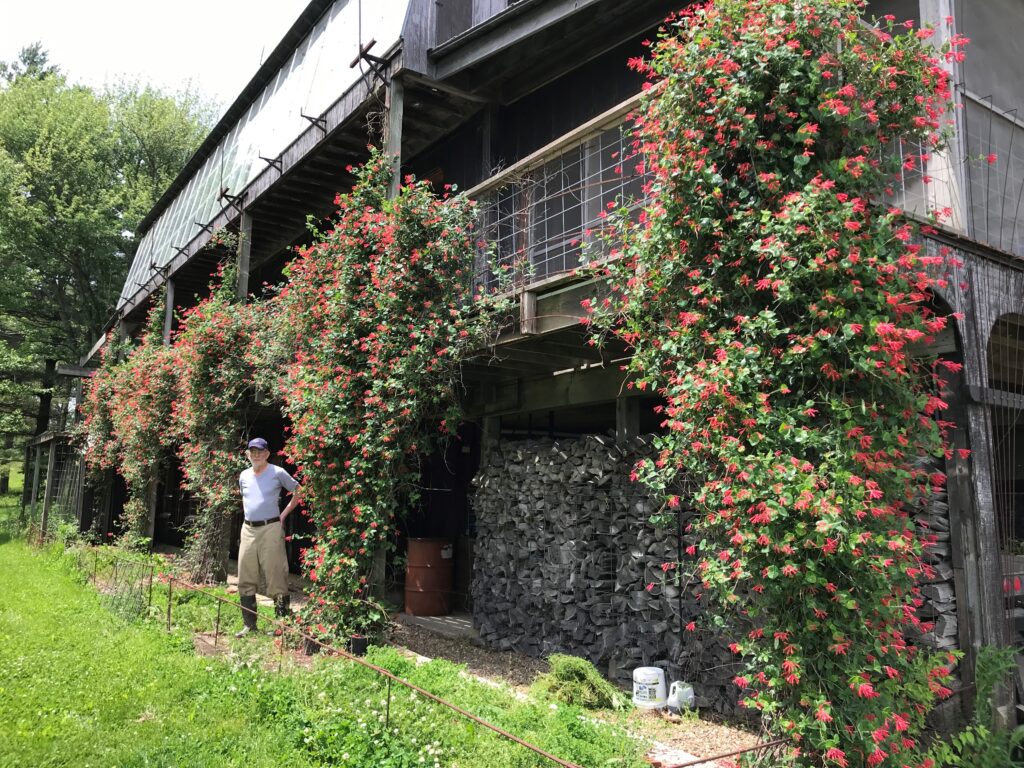Hummingbird Heaven, Hummingbird Hell
Longtime readers may recall that five years ago I built a 1 1/2 story trellis which runs 50 feet, the length of our house. It is planted with our native trumpet honeysuckle vines, which have been selected to bloom from mid-spring through late autumn. The named variety is Major Wheeler. The purpose is to provide a continuous food supply for our ruby-throated hummingbirds during the summer portion of their annual migration cycle. This has been very successful, and with six of our main floor windows framed by blooming honeysuckle, we only need to look out the windows for a few minutes before a hummingbird appears.
The first few years they just seemed to be random birds making random appearances, but I’ve gradually learned to recognize them as individual birds and have begun to understand the patterns in their behavior. Last year became rather entertaining as two teenagers tag-teamed their mom, who was not trying too hard to chase them from her territory which included the trellis.
This year, our first arrival was a small dark male, who only visited sporadically, perhaps checking out other potential territories also. A week later, a somewhat larger female appeared, stayed around regularly, and tolerated the male unless he got too close. He did do his U-shaped courtship display flight in front of her at least once. Then several other hummers appeared. The chases became serious and furious, and quickly settled down to one large female — perhaps the original — tolerating none others around the trellis, which meant that she was mated and now defending a nest site somewhere nearby.
About six weeks later, she tolerated two juveniles working the trellis close to her, which I assume were her children. But only a few days later she drove them off. The reason became clear weeks later when another pair of small juveniles appeared with her, and she had apparently started a second nest before the first clutch had fledged, and her territorial instincts had kicked in again to drive off the firstlings. The second pair of fledglings stayed around the trellis area for the rest of the summer, tolerated by mom. They played endless games that looked like tag. One would be feeding on a flower and the other would dart up, tap it on the back and flee, and the other would whirl around and chase it. These were short chases and both would soon return to the trellis area. They didn’t try this with mom, who was often nearby.
The threesome grew quite tolerant of me standing nearby watching the antics of the juveniles. Mom no longer had a nest to defend and feed, and grew tolerant of other hummers. On one occasion, I saw seven hummers all working different parts of the trellis without conflict, and it became difficult to distinguish who was who, except for the two youngsters still playing tag.
Summer ended abruptly for them on September 6th, the weather turning 20 degrees colder than average for that date, accompanied by a misty damp rain. This is usually a signal for them to slip into torpor and ride out the day and night, conserving energy. And nobody showed up that day, indicating that they were all in agreement that expending energy to obtain nectar would be a poor investment. The cold misty wet weather continued for five more days.
On day two, a single hummingbird showed up once to feed on flowers, and none on days 3-6. I do not think that a ruby-throat can survive six days in continuous torpor and one possibility is that they never came out of torpor, burned their last calories and died. I searched the yard and found none, but a tiny green bird in green grass can almost vanish.
Another possibility is that they made their own weather forecast, saw the problem coming and simply started their migration early, burning their skimpy reserves to get far enough south into milder weather. I do not know. We should not be surprised to find high mortality in a tiny, tropical bird that migrates into southern Canada. David Sibley, in his guide to bird life and behavior, page 358, mentions one study of ruby-throats with “adult annual survival only 30-45 percent.
In subsequent weeks, when more seasonal weather prevailed, individual ruby-throats showed up at the still-flowering trellis for a day or two. They all had bulging bellies and I interpret this to mean that they were migrants from further north, stocking up on calories to cover flowerless areas they may encounter on their journey southward. The more I learn about their lives, the more there seems to be to learn.




